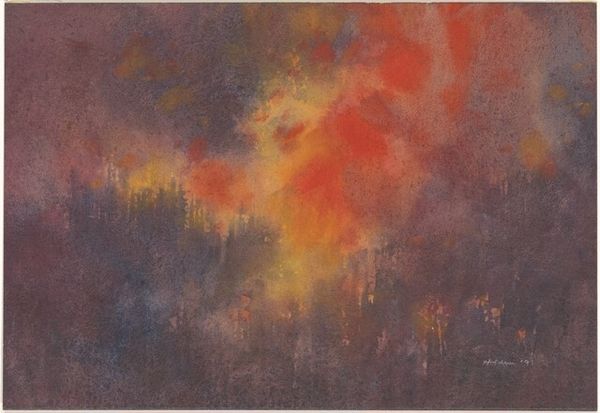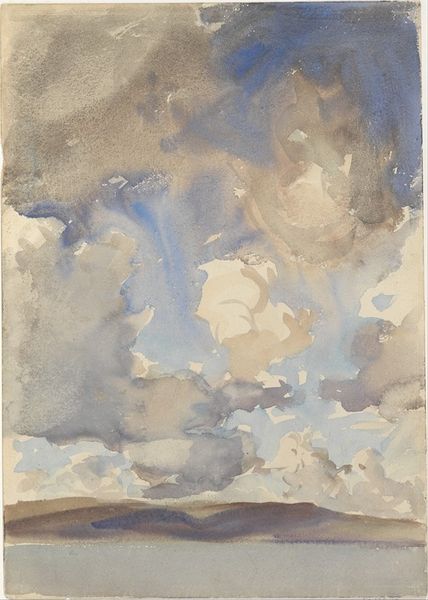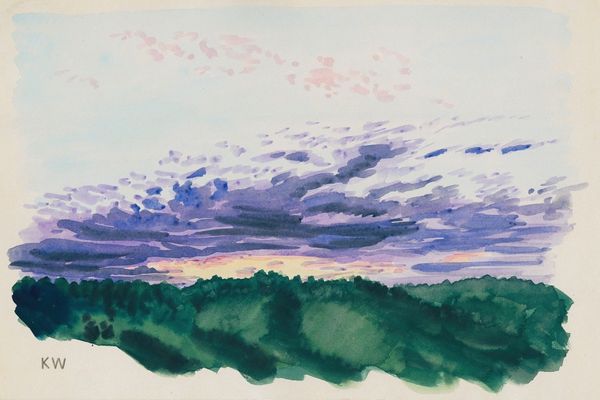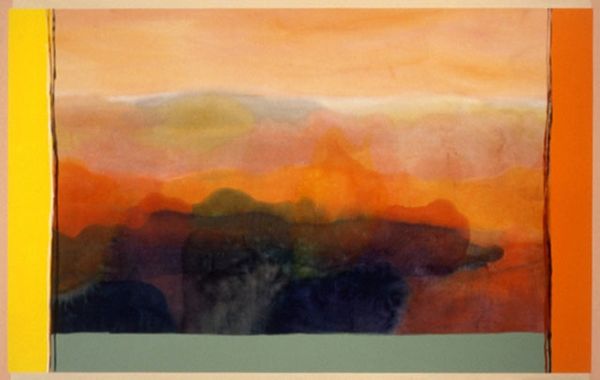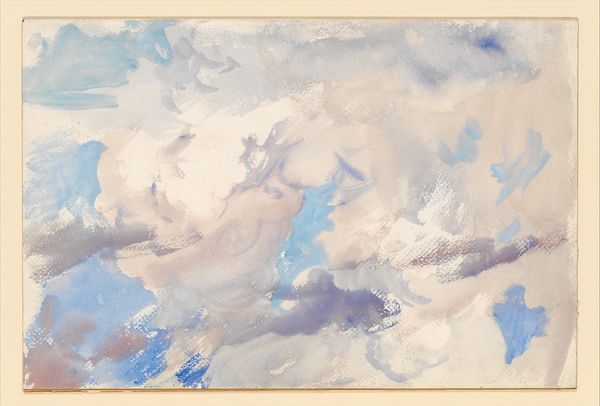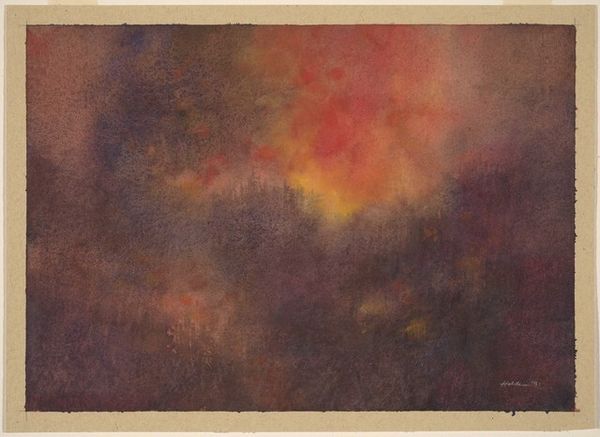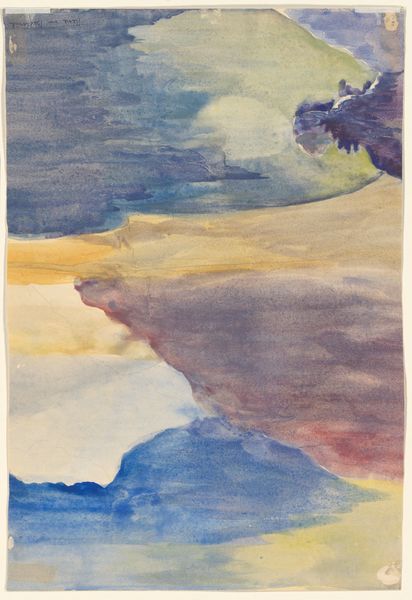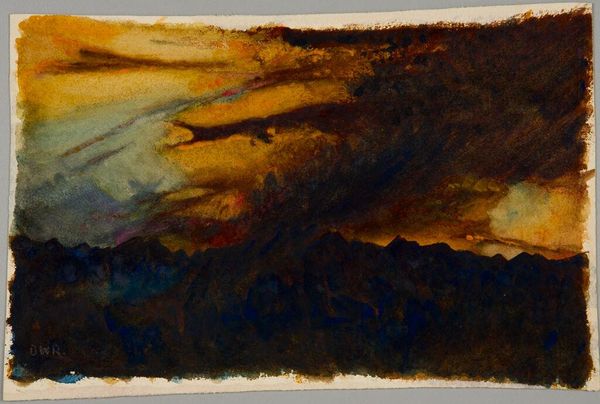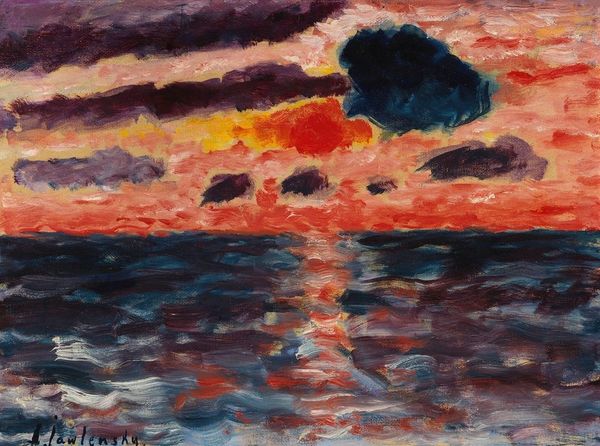
drawing, watercolor
#
drawing
#
abstract expressionism
#
landscape
#
watercolor
#
geometric
#
expressionism
#
sea
Dimensions: overall: 33.3 x 47 cm (13 1/8 x 18 1/2 in.)
Copyright: National Gallery of Art: CC0 1.0
Curator: Here we have Emil Nolde's "Stormy Sea," created around 1930 using watercolor. What strikes you immediately about this evocative scene? Editor: A feeling of impending doom! It's dramatic and heavy, mostly due to the large storm clouds and muted color palette. The brushstrokes feel hurried, conveying a sense of urgency or perhaps the raw energy of nature. Curator: Nolde often used the sea as a potent symbol in his art. Water is the unconscious; the source from which life comes, the depths of the collective memory. This landscape reads less as documentation, and more as a psychological state, rendered in bold brushstrokes. Editor: Absolutely. Given Nolde's affiliations with the Nazi regime despite being later declared a 'degenerate artist' during the same period, one can read deeper themes within the work: anxiety surrounding Germany’s economic crisis, or the darker impulses threatening to drown civil society. Curator: That reading has validity given what we know of Nolde, but it's important to recall Expressionism sought universal feeling. Nolde’s rendering of the waves is nearly geometric; those precise, short marks give texture to the water, animating its roiling surface. Doesn't that geometric ordering act to control or at least express something other than "doom?" Editor: Perhaps. But it still comes across heavy-handed. Those dramatic skies feel oppressive in this watercolor sketch, speaking to the precarious moment for many people as fascism spread throughout Europe. Curator: The emotional range here really stems from Nolde's mastery of color; the clashing warm oranges of the cloud meeting cold, viridian-tinged blues of the water evoke conflicting and powerful feelings. Nolde uses color not just to describe, but to communicate profound internal experience. Editor: That resonance of color is undeniably captivating! Thinking about its historical moment allows us to understand it as something bigger. I see the struggle of nature mirroring social struggles—it helps us unpack it in modern terms. Curator: Considering all of this, “Stormy Sea” asks how the natural world mirrors, perhaps even dictates, the turbulent and unpredictable forces within humanity. Editor: A vital question that art such as this forces us to confront again and again. Thanks!
Comments
No comments
Be the first to comment and join the conversation on the ultimate creative platform.

